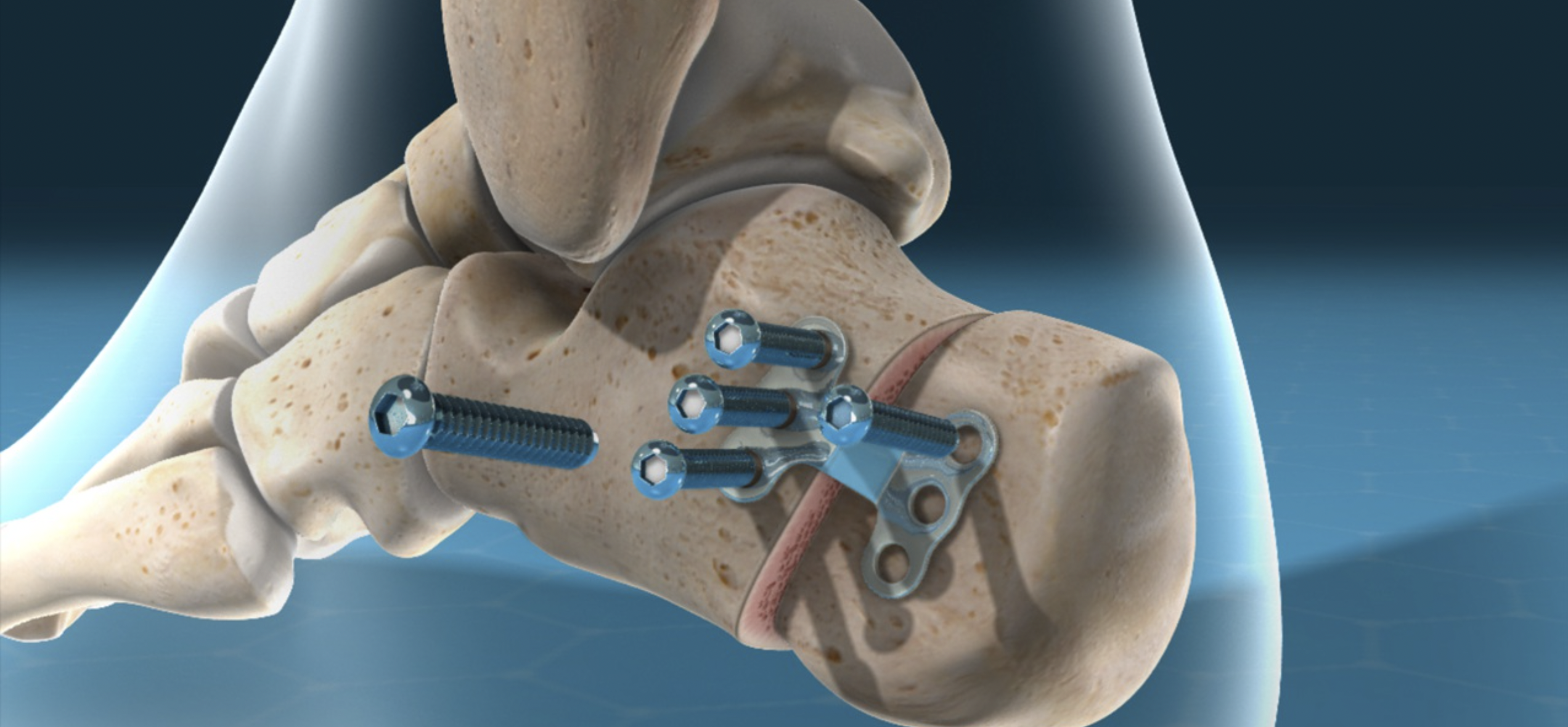Calcaneal Therapeutic Osteotomy

Calcaneal Therapeutic Osteotomy
Calcaneal osteotomy is a surgical procedure that involves controlled break or cutting (osteotomy) of the heel bone (calcaneus) to correct deformities, alleviate pain, and improve function in the foot.
The procedure in Cuba is carried out to reposition the heel bone so that it is aligned with the shin bone by shifting it with the shin bone by repositioning it underneath it by either shifting it inside (medial) or outside (lateral). A calcaneal osteotomy is commonly used to treat conditions such as flatfoot (pes planus), cavus foot (high arch), and other structural abnormalities of the foot after non-operative measures have not produced significant relief.
Benefits of Calcaneal Osteotomy
The benefits of calcaneal osteotomy include:
- Improved foot alignment
- Reduced pain and discomfort
- Improved range of motion
- Enhanced foot function and mobility
- Enhanced stability
- Better overall quality of life
Types of Calcaneal Osteotomy
There are various types of calcaneal osteotomy procedures, each serving a unique purpose:
- Medializing Calcaneal Osteotomy (MCO): This procedure is designed to correct fallen arch by repositioning the heel bone inward to realign the foot, restore a more natural arch, improve overall foot function and prevent further deterioration of the foot structure.
- Lateralizing Calcaneal Osteotomy (LCO): This procedure is to correct abnormally high arches by shifting the heel bone to the outside in order to redistribute weight more evenly across the foot, reducing pain and enhancing stability.
- Dwyer Osteotomy: This procedure is carried out to correct varus deformity of the heel, where the heel bone tilts inward excessively.
- Evans Osteotomy: Lengthens the lateral side of the foot, particularly useful for correcting flatfoot deformity in children.
The Procedure
Calcaneal osteotomy is a detailed and carefully executed surgical procedure and involves:
Before procedure:
- Patient Assessment: Consultation with orthopaedic surgeon, comprehensive evaluation of the patient’s medical history, physical examination, and imaging studies (X-rays, MRI, CT scans) to determine the extent of the deformity and plan the surgery.
- Anesthesia: The procedure is typically performed under general anesthesia or regional anesthesia (spinal or epidural), depending on the patient’s condition.
During the procedure:
- Skin Incision: The exact location and length of the incision depends on the type of osteotomy being performed.
- Exposure: The soft tissues and muscles are carefully retracted to expose the calcaneus.
- Osteotomy: Using specialized surgical tools such as oscillating saws or chisels, the surgeon makes a controlled cut through the calcaneus. The type and direction of the cut depend on the specific osteotomy being performed.
- Shifting the Bone: The cut section of the calcaneus is carefully repositioned to achieve the desired correction.
- Bone Graft: For some patients, bone graft may be used to fill any gaps created by the repositioning of the calcaneus to ensure stability and promote healing.
- Securing the Bone: The repositioned calcaneus is secured in place using screws, plates, or pins. The choice of fixation depends on the specific osteotomy performed.
- Fluoroscopy Check: The position and alignment of the bone and hardware are verified using fluoroscopy to ensure proper correction.
- Soft Tissue Repair: The soft tissues and muscles are carefully repositioned and sutured back into place.
- Skin Closure: The skin incision is closed using sutures or staples. A sterile dressing is applied to the surgical site.
After the Procedure
- Immobilization: The foot is immobilized in a cast or boot to protect the surgical site and promote healing. Non-weight-bearing or limited weight-bearing is typically required for several weeks.
- Monitoring: The patient is monitored for any signs of complications, such as infection or nerve damage.
- Physical Therapy: Once initial healing has occurred, physical therapy is initiated to restore strength, flexibility, and function. This includes exercises to improve range of motion and gradually increase weight-bearing.
ACCOMMODATION:
Private room with the following features:
- Electronic patient bed
- Equipment for disabled patient
- Oxygen hookup
- Three AP meals taking into account the patient’s preferences and / or special diets prescribed by physician
- Fully equipped private bathroom
- Infirmary and nursing care
- Colour TV with national and international channels
- Local and international phone services (extra cost will apply)
- Safe box
- Internet service on every floor
- Laundry services
ADDITIONAL SERVICES INCLUDED IN THE CALCANEAL OSTEOTOMY PROGRAM:
- Assistance in visa issuance and extension (If needs be)
- Each patient/ companion will be assigned a multi-lingual field member with the mandate of attending to all of our patients’ translation and personal needs;
- 20 hours internet service;
- Local airport pickup and drop off; and
- Hospital pickup and drop off (if needed)
